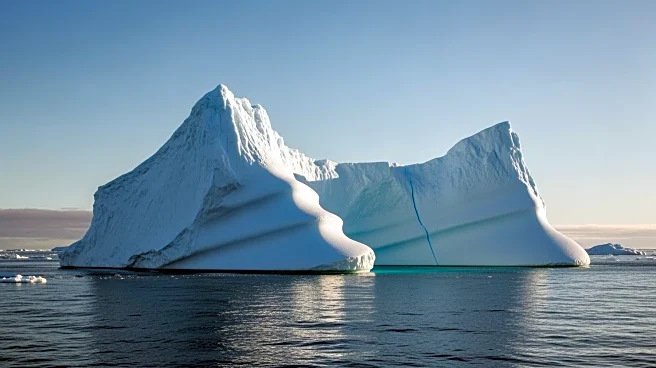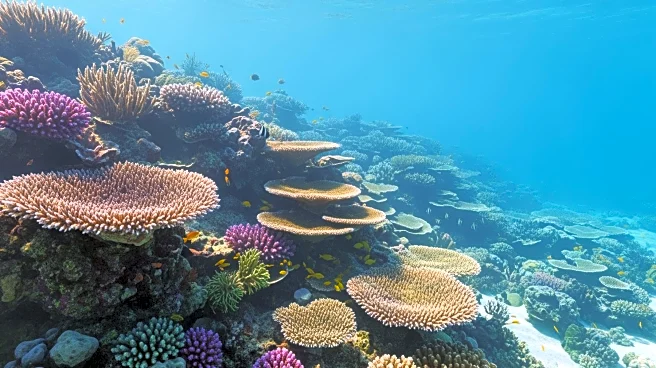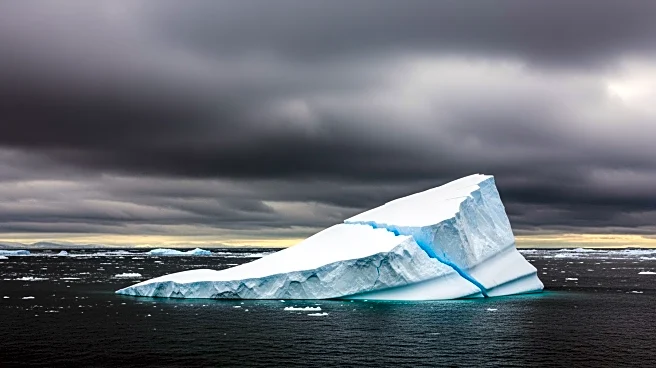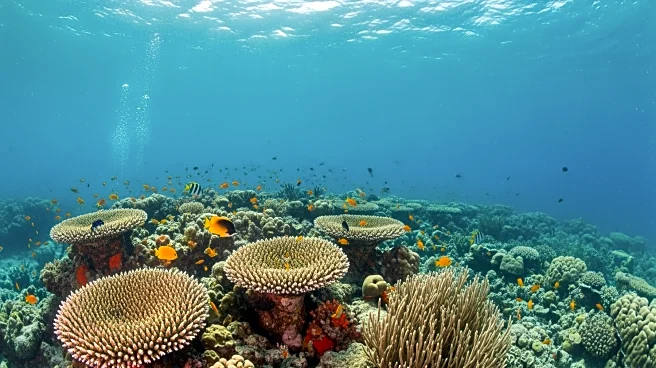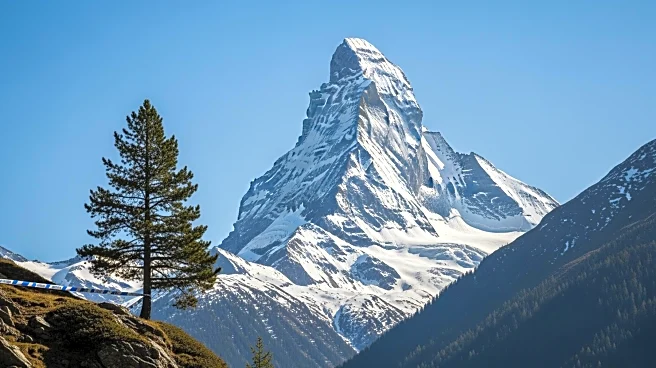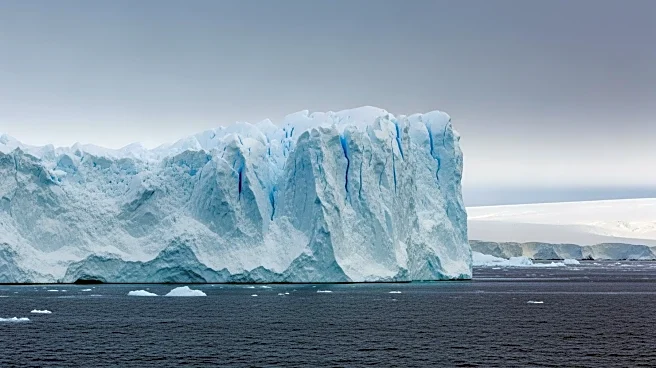What's Happening?
The Thwaites Glacier in West Antarctica, known as the 'Doomsday Glacier,' is experiencing accelerated destabilization due to cracks in its ice shelf. The Thwaites Eastern Ice Shelf (TEIS) has been progressively
fracturing over the last two decades, particularly around a shear zone upstream of its pinning point. A study published in the Journal of Geophysical Research: Earth Surface details how these fractures have led to the shelf's detachment from its stabilizing pinning point, causing increased ice flow and loss of mechanical stability. The research, part of the TARSAN project under the International Thwaites Glacier Collaboration, utilized satellite imagery, ice-flow velocity measurements, and GPS records to trace the evolution of these fractures. The study identifies four stages of weakening and highlights a positive feedback mechanism between fracture-induced damage and ice acceleration.
Why It's Important?
The destabilization of the Thwaites Glacier's ice shelf has significant implications for global sea-level rise. As the ice shelf continues to weaken, the potential for increased ice flow into the ocean grows, contributing to rising sea levels. This pattern of disintegration serves as a warning for other Antarctic ice shelves showing similar signs of weakening. The loss of these ice shelves could accelerate the Antarctic Ice Sheet's contribution to global sea-level rise, impacting coastal communities worldwide. The research underscores the importance of monitoring and understanding ice shelf dynamics to predict future sea-level changes.
What's Next?
The continued study of the Thwaites Glacier and its ice shelf is crucial for predicting future sea-level rise. Researchers will likely focus on further understanding the feedback mechanisms between ice shelf fractures and ice flow acceleration. Monitoring other Antarctic ice shelves for similar signs of weakening will be essential to anticipate potential global impacts. The findings may prompt increased international collaboration and funding for Antarctic research to mitigate the effects of rising sea levels.
Beyond the Headlines
The disintegration of the Thwaites Glacier's ice shelf highlights broader environmental concerns, including the impact of climate change on polar regions. The study's findings may influence global climate policy and drive efforts to reduce greenhouse gas emissions. Additionally, the research could lead to advancements in satellite and GPS technology for monitoring ice dynamics, enhancing our ability to predict and respond to environmental changes.


